If you’re looking for a way to add fresh, flavourful herbs to your cooking, then you should consider growing a herb garden. Herbs are easy to grow and can be grown indoors or outdoors. In this blog post, I will provide useful gardening tips on growing herbs at home. By the end of this post, you’ll know how to start your very own herb garden!
One of the great things about herb gardening is that it doesn’t require a lot of space. You can grow herbs in pots on your windowsill or in a raised bed in your backyard. If you’re short on space, don’t worry – there are dwarf or compact varieties of herbs that will do well in small spaces.
Growing a herb garden is also a great way to get started with gardening if you’re new to the hobby. Herbs are relatively easy to grow and care for, so they make a great choice for beginner gardeners. Plus, there’s nothing quite like being able to snip fresh herbs from your own garden to use in your cooking!
A few things to note before you start…
If you can create the ideal microclimate for your plants, you can even grow some plants that typically do not thrive in your climate. In tropical countries, gardeners have successfully grown plants that thrive in subtropical and temperate climates from their apartment using soil, hydroponic, aeroponic or aquaponic methods. These include parsley, cilantro, dill and others.
You don’t always have to spend money on plants. You can get plant cuttings, plants, and seeds from other people in your local gardening community group/s by swapping or sometimes they just give them away. Have a look on Facebook to find a gardening group in your area. Here is a list of places where you can find free plants if you live in Singapore.
Before buying plants, observe how much sun you get every day and at what time. This will help you understand what kind of plants you can grow. It is worth noting that the sun’s path changes throughout the year, so even though you have sun in a particular area of your house in summer, this might not be the case in winter. This is applicable even if you live in a tropical climate. If you don’t have a lot of sun, consider investing in an indoor growing system.
It is a good idea to research what conditions a plant needs before bringing it home. Each plant has its preferred lighting, watering, soil drainage and fertilising requirements. It is also helpful to find out the lifespan of a plant, they are classified as annual, biennial and perennial plants.
With this in mind, read on to find out how to start a herb garden!
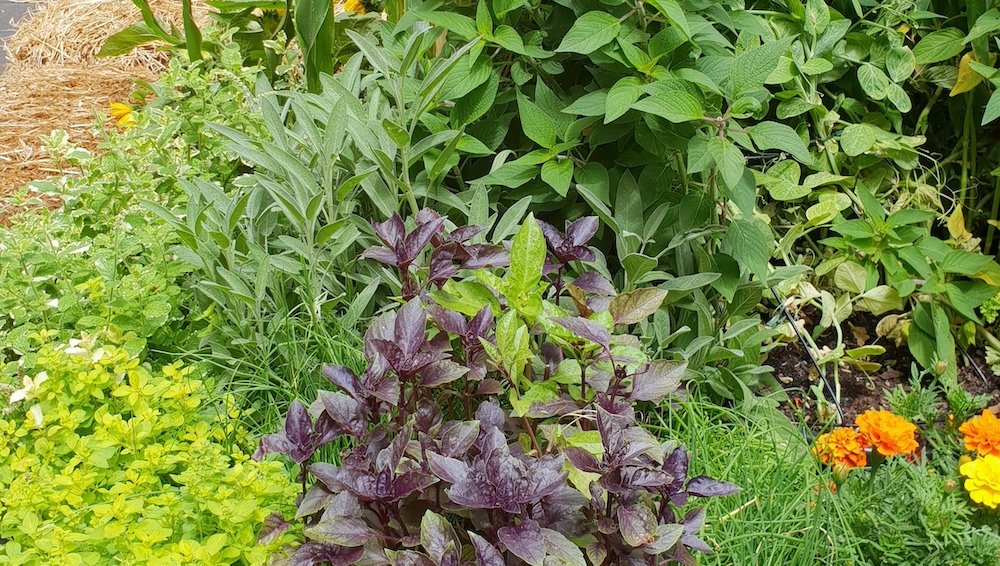
What herbs should you grow?
Pick herbs that are suited to your climate, space and flavour preference. The best herbs for beginner gardeners are plants native to your region. These tend do well as they are already suited to your climate, while extra care needs to be given to herbs from a different climate.
Some herbs can take up a lot of room, for instance, sweet basil can grow into a bush and parsley can branch out and occupy a fair bit of space. If you do not have much room to play with and need to maximise all the real estate you have at your window ledge or in your garden bed, opt for dwarf or compact varieties of herbs. Sage, dill, basil, curry leaf, and rosemary are some herbs that have compact varieties.
Some easy to grow herbs for tropical climates include mint, basils, pandan (also known as fragrant Screwpine), curry leaf, sawtooth coriander, laksa leaf (Vietnamese mint), chives, ulam raja (cosmos caudatus). Other herbs that can do well with proper soil and microclimate include rosemary, oregano, dill, coriander, parsley, sage, thyme among others.
In temperate climates, mint, basil, dill, rosemary, oregano, marjoram, coriander, parsley, sage, chives, chervil, thyme, tarragon do well as long as it is grown in its preferred season. While those living in a subtropical climate have the luxury of planting a wide variety of herbs that grow well in the tropics and in temperate climates.
You can buy seedlings or established plants from farmer’s markets, garden nurseries, big box stores, get free cuttings from neighbours and your local gardening community or grow your herbs from seed. Growing from seed definitely takes longer but it is a very satisfying and enriching experience to watch them mature into a large plant.
Growing herbs from seed
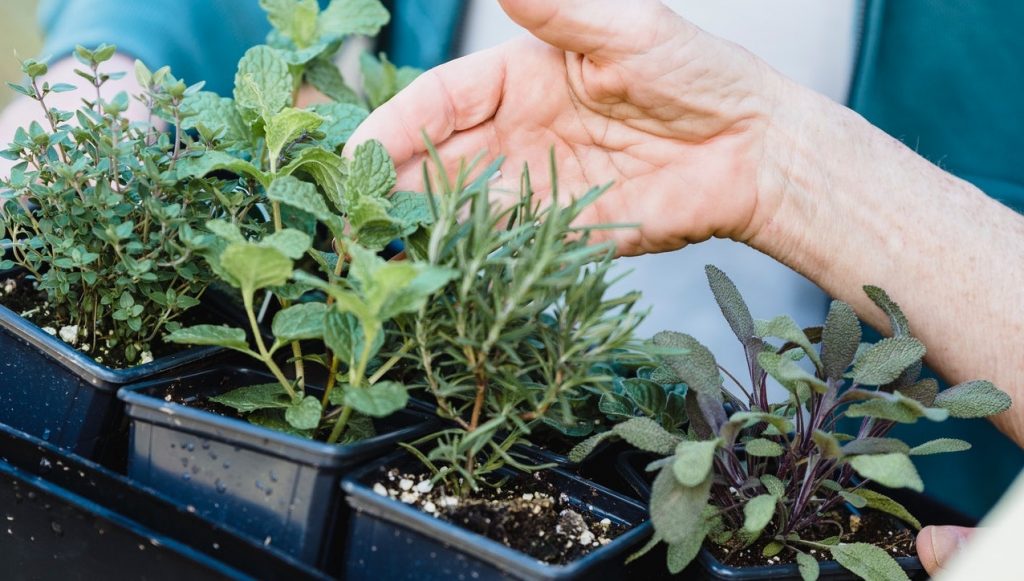
If you’re starting your herb garden from seed, you can purchase seeds at garden nurseries, big box stores, and direct from seed suppliers. You can also get free seeds from your local gardening community or from other gardeners if they have some to spare.
If you live in the US or Canada, some popular seed suppliers that ship to your door include Johnny’s Selected Seeds, Baker Creek Heirloom Seeds, Kitazawa Seed Co, Seed Savers Exchange and Burpee. In the UK, some popular seed suppliers include Sutton’s, Heritage Seed Library, Mr Fothergill’s, Pennard’s Plants, Chiltern Seeds, Real Seeds and Jekka’s.
When I was spending a lot of time in Northern New South Wales, Australia, my favourite places to buy seeds include Green Harvest, Greenpatch Organic Seeds, The Digger’s Club (cheaper with a membership), Eden Seeds, The Seed Collection, Mr Fothergill’s (available at Bunning’s and other hardware stores). Other seed suppliers that Australians can shop from include Australian Seed, Happy Valley Seeds, Seeds of Plenty and Boondie Seeds. For those who reside in Singapore, here is a list of places where you can buy seeds.
Begin by planting the seeds in small pots or seed trays filled with potting mix or seed-starting mix. When it comes to determining how deep to plant seeds, follow the instructions on the packet. Plant 2-3 seeds in each hole, then water the soil lightly and keep it moist. Place the pots in a warm, bright spot and wait for the seeds to germinate.
Once the seeds have germinated, thin out excess seedlings so that only the strongest ones remain. Make sure to give your seedlings some sun or put them under grow lights if you do not have the luxury of sun. This is so that it doesn’t become leggy in its quest for sunlight.
As your seedlings mature it will be able to take more sun. When the seedlings put out true leaves (second set of leaves), transplant them into individual pots or into your garden beds.
If you are planning to transplant your seedlings into the garden, they need to go through a hardening-off stage. This is to help your plants acclimatise to the outdoors and give them a better chance of survival.
Harden off plants by progressively introducing them to more sun each day over a period of a week or more before planting into the ground. If doing so in spring, transplant after all danger of frost has passed.
How to start a thriving herb garden
Here are some important beginner’s tips on how to start your own herb garden.
Choose a suitable location. Herbs need at least four hours of sunlight each day, so pick a spot in your kitchen or garden that gets plenty of light. Offering your plant some air circulation is beneficial as it reduces the chance of them having fungal diseases.
Get the watering right. Herbs need to be watered regularly, especially during the hot summer months. However, be careful not to overwater them, as this can cause root rot. Pay attention to the conditions of your space, the more sun and wind your plants are exposed to, the more frequent you will need to water them.
Use a suitable soil mix. Rosemary, thyme, oregano, marjoram and sage require well draining soil, unlike basil, mint and chives, which prefer moist soil. You can also learn to mix your own if you would like to attempt doing so.
To minimise weeds in your garden beds, lay mulch around plants. Mulch is any type of material applied around plants for the purpose of protecting the soil from moisture loss, offers weed suppression, soil insulation and can even be used as an aesthetic feature. Mulch comes in organic or inorganic forms, and include coco fibre, coco chips, leaves, gravel, sugarcane, plastic, wood chips, rice husks and many others.
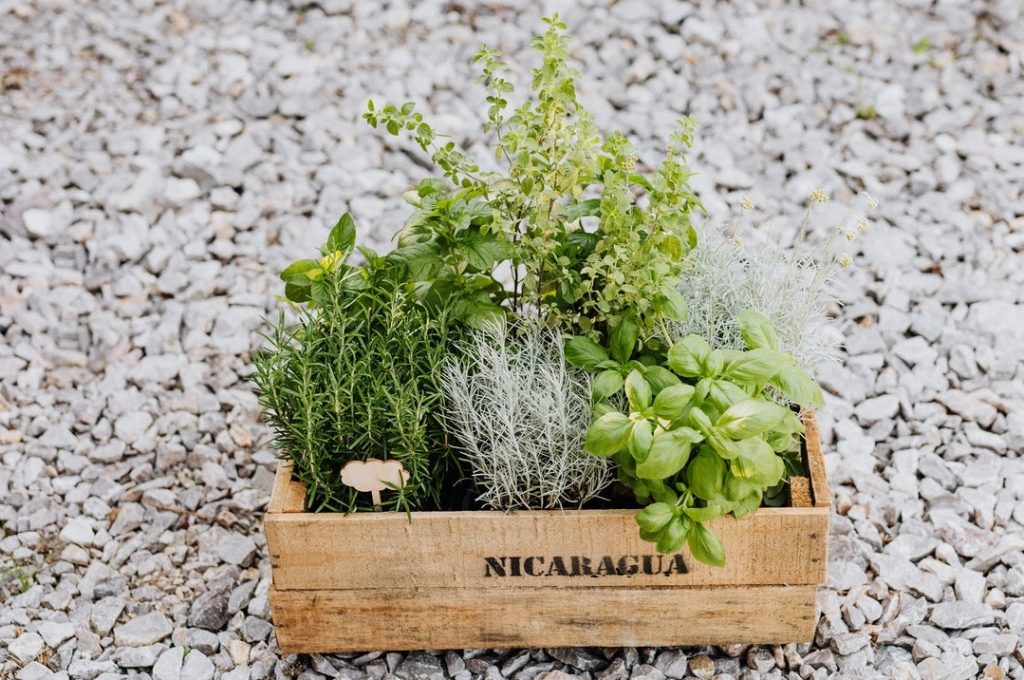
Fertilise your herbs. Fertiliser is necessary for plant growth and development. Do this during the active growing months of spring and summer. During winter, less fertiliser is needed since plants do not grow as much.
Pick a granular or liquid organic fertiliser which is high in nitrogen to encourage continuous and robust growth. Fish emulsion is a great all-round fertiliser that requires dilution. It is often recommended for herbs but be warned, it has a strong scent, however there are deodorised versions available.
The flavour of herbs often change once it begins flowering. Remove the flower heads if you still wish to get more out of your plant and if you’re not in a hurry to save seeds for growing your next crop.
Prune your herbs to encourage growth. When harvesting herbs, be sure to cut them back so that they continue to grow. Also, make sure to only harvest what you need, do not over-prune your herbs as it can cause the plant to go into shock.
Learning how to start a herb garden from scratch might seem daunting in the beginning, but with some trial and error, you will have more confidence! If you are thinking of growing herbs in containers instead of in-ground, read on for more tips!
Growing herbs in pots for beginners
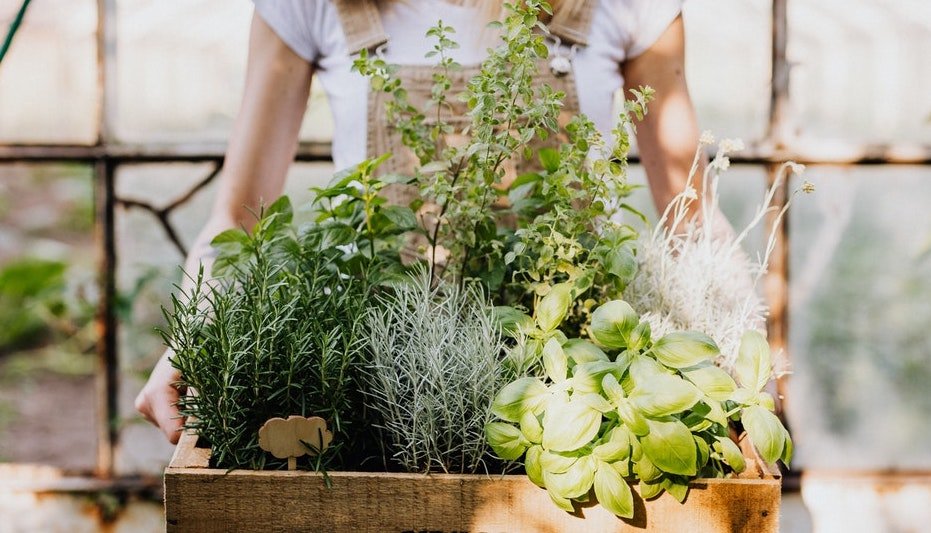
Pick the right container for your plants. Choose the most suitable material and container size for your plant’s needs. Plastic and ceramic pots retain moisture better than terracotta pots, which are porous.
If you are planning to use a long planter, make sure you grow plants that prefer the same type of soil. For example, rosemary, sage, oregano, thyme and marjoram prefer well-draining soil and can therefore be planted together. Likewise, moisture-loving plants like basil, cilantro, dill and tarragon and can be housed in the same planter. It is worth noting that mint needs to be planted in their own container due to their invasive nature.
When you bring home your herbs from the garden nursery, check the soil that comes with the plant. In Singapore, it is common for herbs to be planted in coco peat, which is not a suitable medium for herbs, especially for rosemary and sage and other herbs that require soil with very good drainage. If this is the case, it needs to be transplanted in a soil mix that is suited to the plant’s preferences.
Keep an eye on soil moisture levels. The best way to know if the soil in the planter is drying out is by inserting your finger 1cm into the soil to gauge how moist it is. Alternatively, you can check using a moisture meter or a plant watering indicator stick.
And lastly, make sure to harvest your herbs regularly! Not only will this keep them from getting overgrown, but it will also ensure that you have a steady supply of fresh herbs to use in your cooking.
With a bit of planning and care, you can easily grow your own herb garden at home. These fragrant plants not only make your kitchen smell amazing, but they can also add flavour and nutrition to your meals. Now that you know how to start a herb garden, what are you waiting for? Get started on your herb garden today!
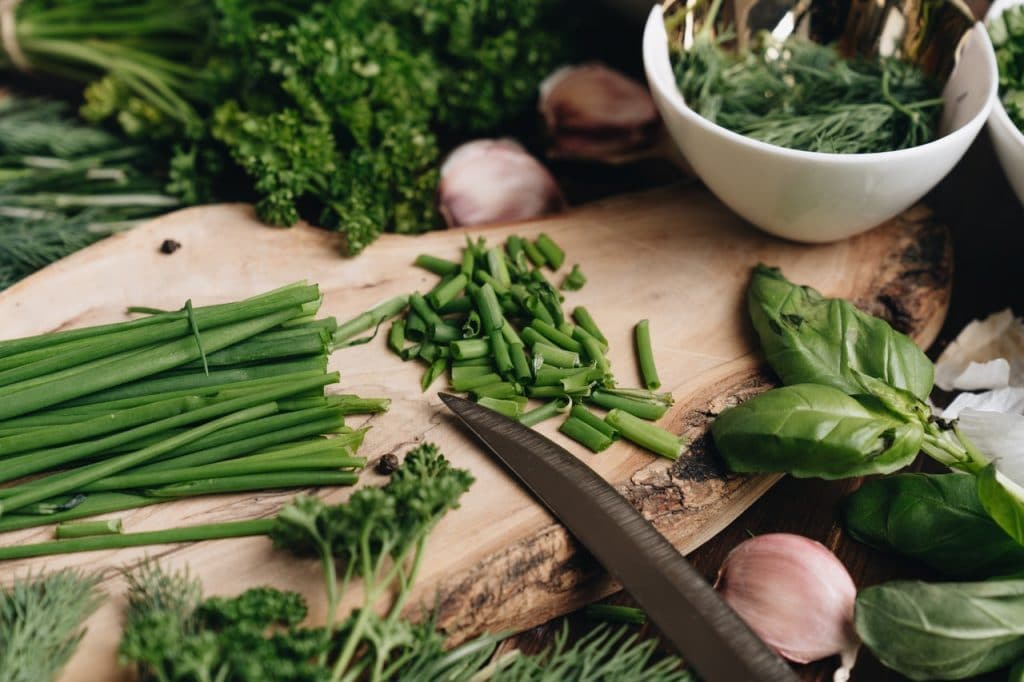
For more gardening updates, follow my Facebook Page – The Tender Gardener, Instagram page @tendergardener and subscribe to my YouTube channel! See you there!
Main photo by Karolina Grabowska. All photos are mine unless stated otherwise.

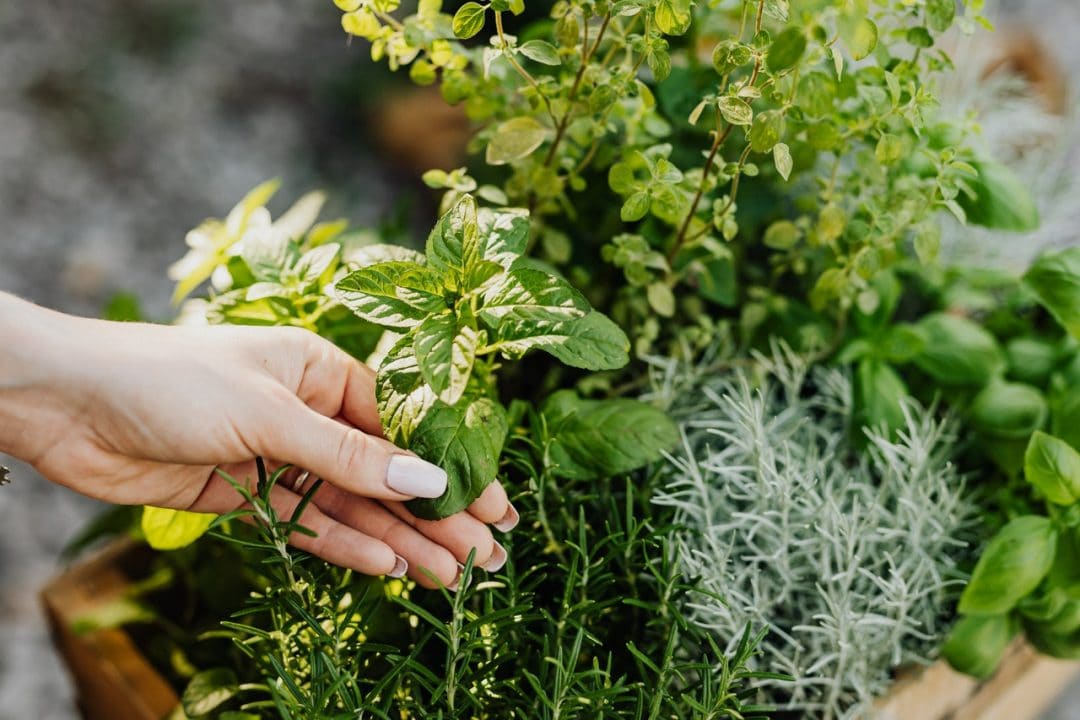
No Comments